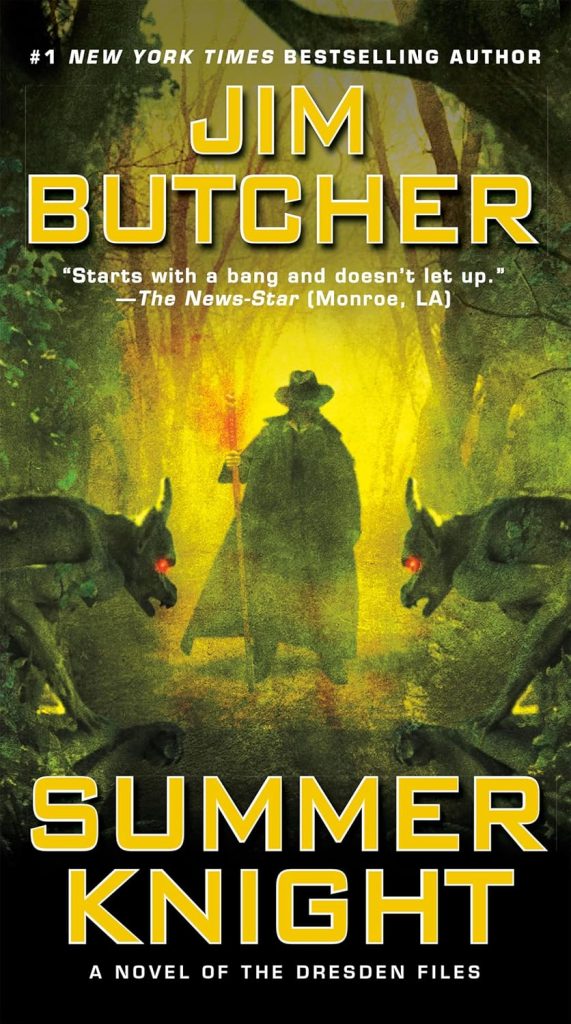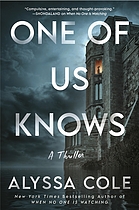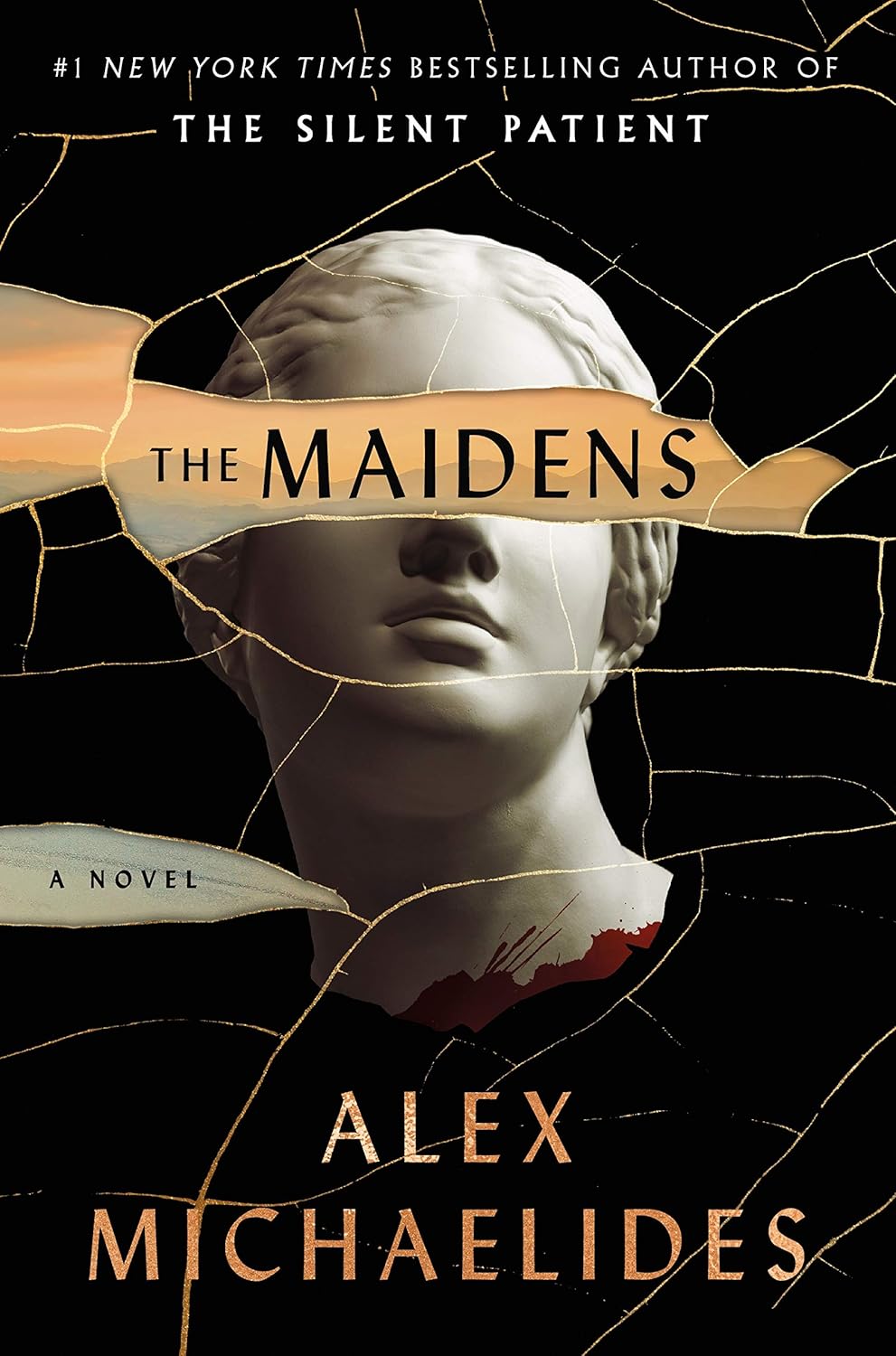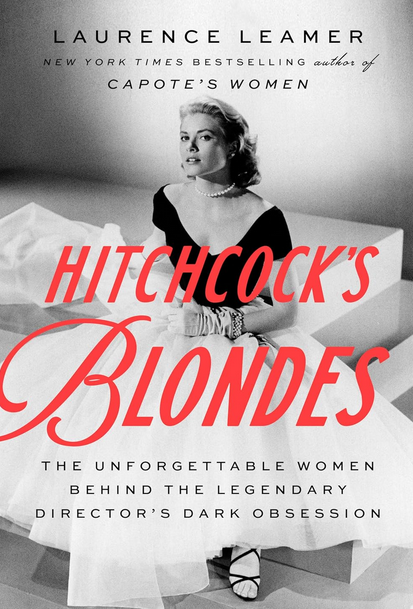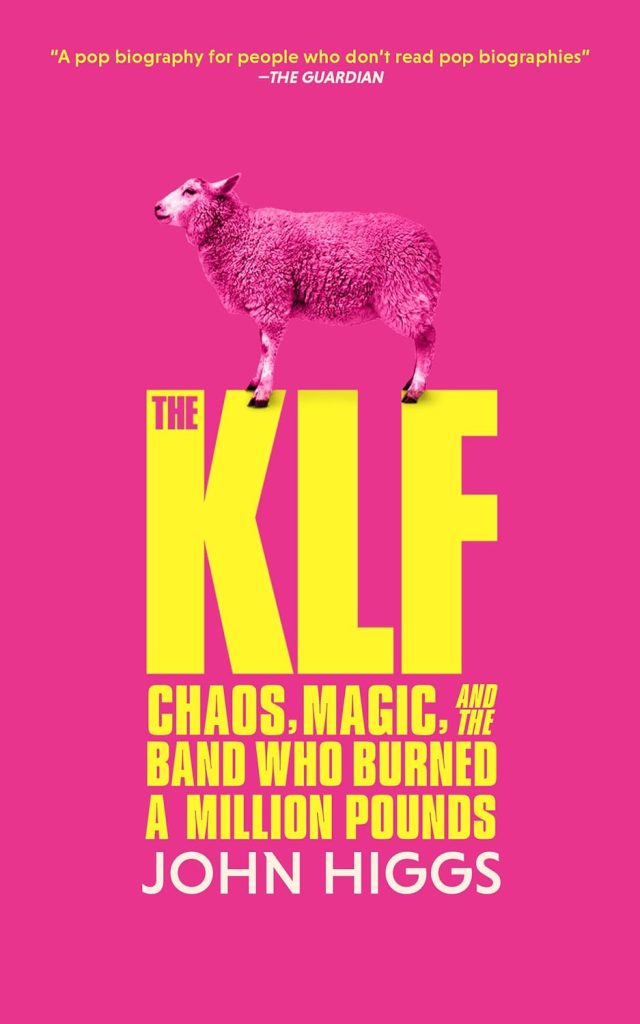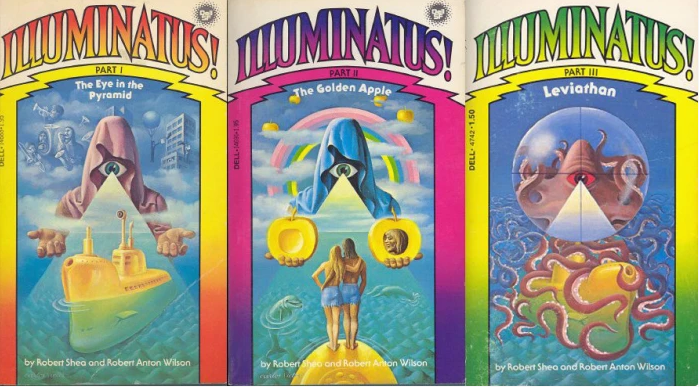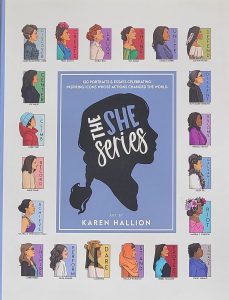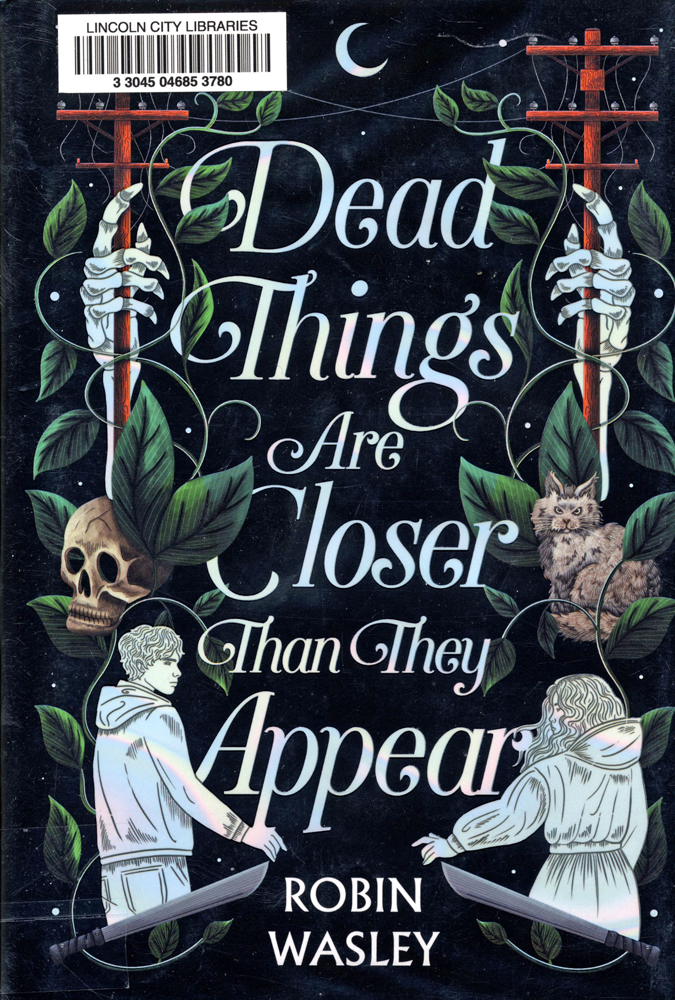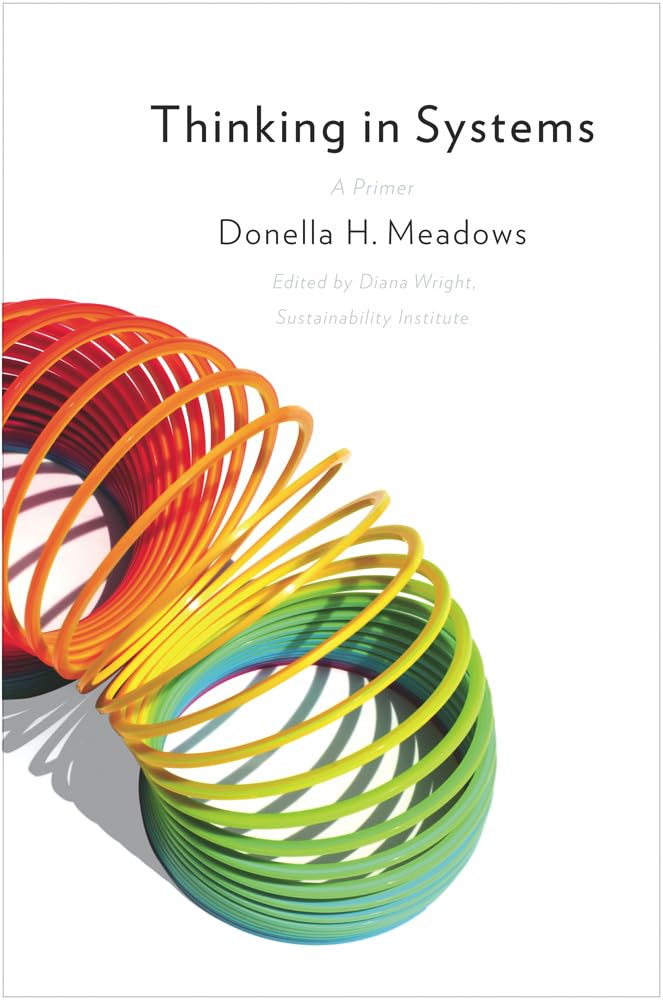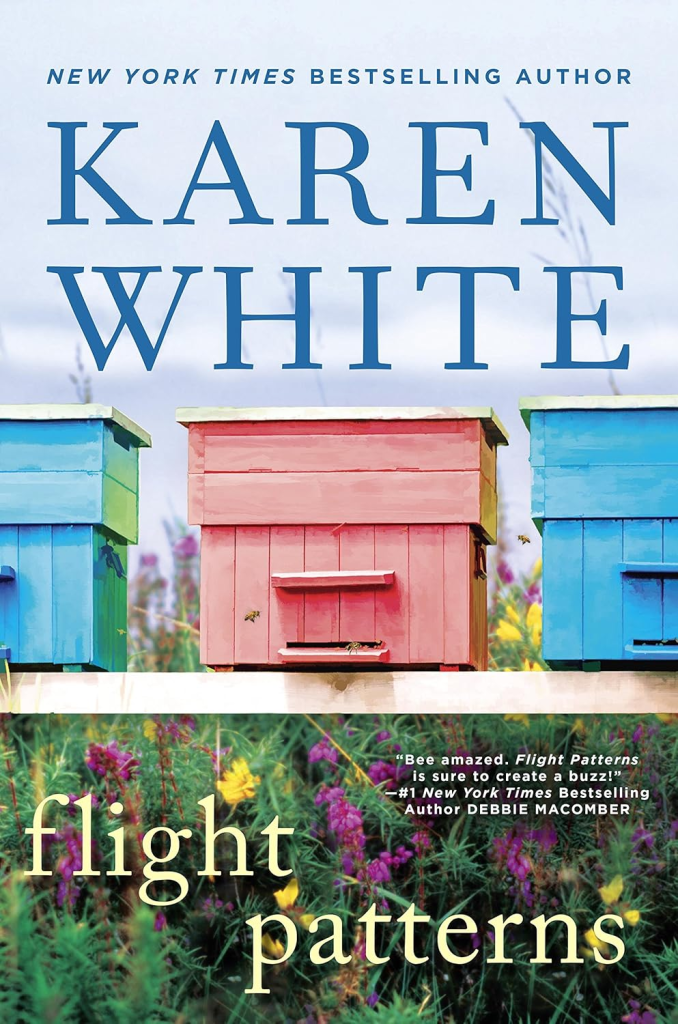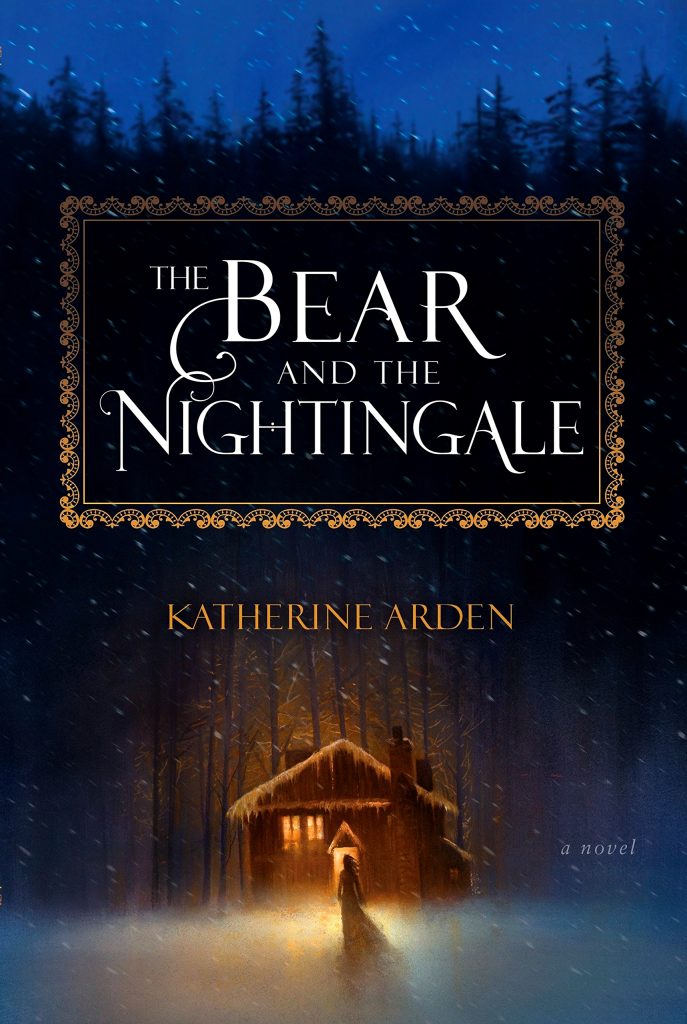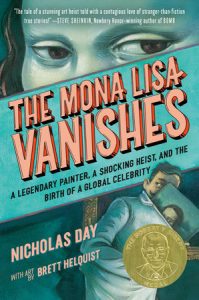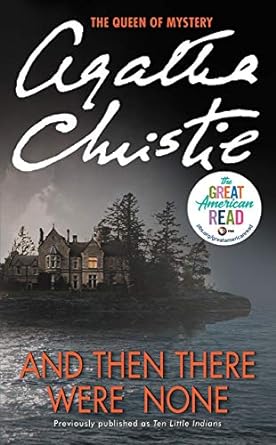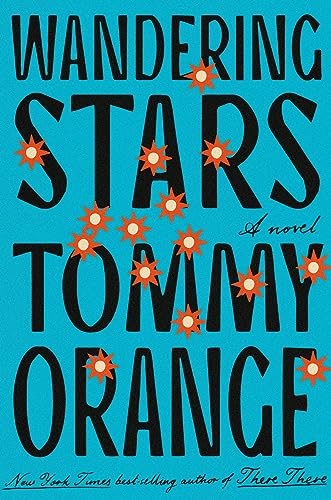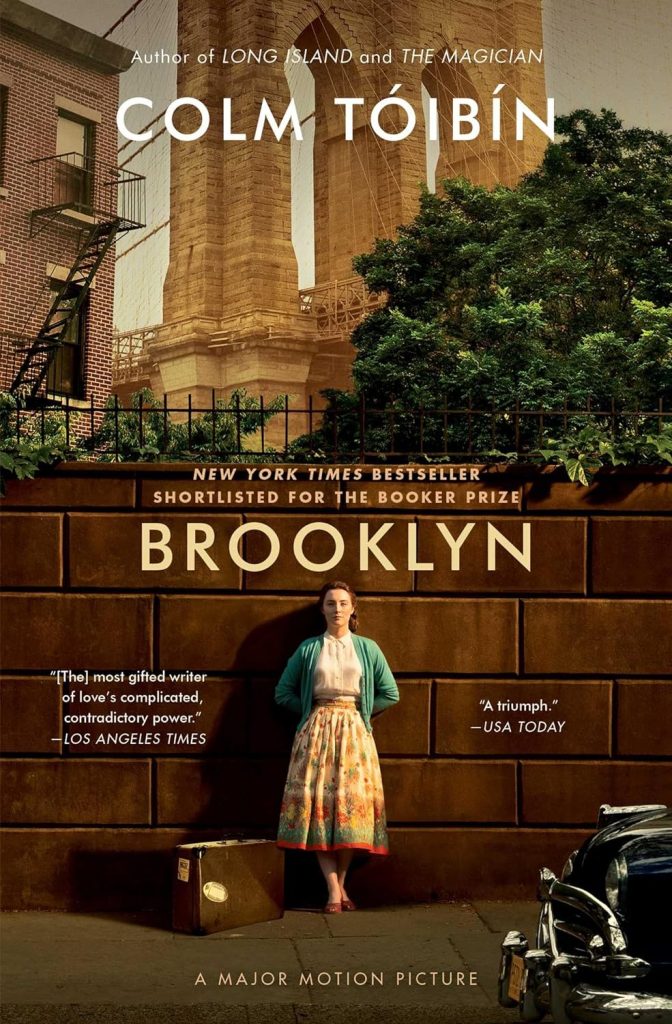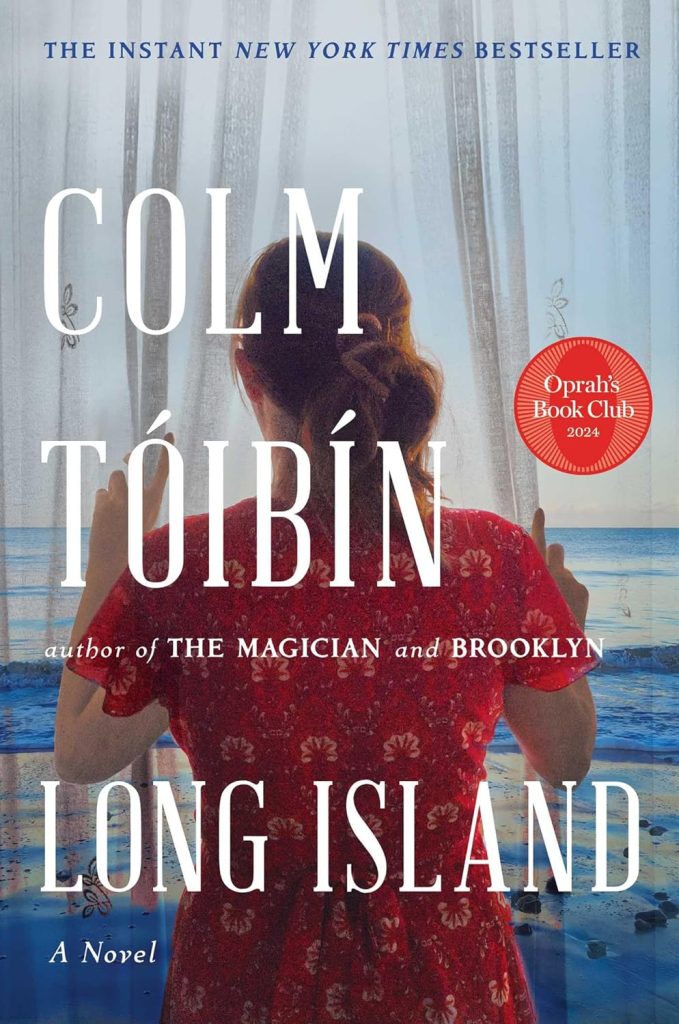Search the Blog
Categories
- Books & Reading
- Broadband Buzz
- Census
- Education & Training
- Friday Reads
- General
- Grants
- Information Resources
- Library Management
- Nebraska Center for the Book
- Nebraska Libraries on the Web
- Nebraska Memories
- Now hiring @ your library
- Preservation
- Pretty Sweet Tech
- Programming
- Public Library Boards of Trustees
- Public Relations
- Talking Book & Braille Service (TBBS)
- Technology
- Uncategorized
- What's Up Doc / Govdocs
- Youth Services
Archives
Subscribe
Tag Archives: Friday Reads
Friday Reads: “Summer Knight” by Jim Butcher
No series has so quickly enraptured me like Jim Butcher’s The Dresden Files, with each book pulling me deeper in than the last. Set in Chicago, the series follows Harry Dresden: wizard for hire, paranormal investigator, and perpetually down on his luck. He’s got a sharp wit, one-liners that leave you laughing out loud, and a hero complex that puts him in dangerous situations for the sake of others that you can’t help but feel for.
Believing in magic has always come naturally for me, I was raised on Disney after all, but the world of The Dresden Files really blends the idea of the supernatural into the real-world setting of Chicago so seamlessly that it leaves you looking for bits of magic around you- though perhaps in more dangerous fashion than Disney magic might have you believe. Ghosts, vampires, werewolves, and of course wizards have all played major roles in the series up to this point- but my favorite has always been the fae.
While the fae had been introduced in previous books, Summer Knight really delves into the world of Faerie and even further expands the magical world that Butcher has been building up for the past three books, so I couldn’t have been more delighted when very early on Harry gets a visit from one of the Faerie Queens, Queen Mab of the Winter Court. His fairy godmother (long story) has sold his debt to her, and she’s here to cash in.
While I won’t delve too deep into the plot points of Summer Knight, it generally covers a brewing war between the Summer and Winter Courts of Faerie, due to the murder of the Summer Knight- and the Summer Queen Titania thinks Winter is to blame. Queen Mab tasks Harry to discover the murderer in order to prevent the coming war between the courts. The book moves at a thrilling pace, involving old characters that you’ve already grown to love as well as introducing some new key characters as well throughout the story. And of course, Harry has the world against him once again as he fights to complete his task on time.
If you’re looking to dip your feet into the world of The Dresden Files, I highly recommend the audio books. I’ve always struggled with audiobooks, either losing focus or not processing parts of the book due to the strange way my brain works, but The Dresden Files has been the exception. The audio books are all done by James Marsters of Buffy the Vampire Slayer fame, and his performance as Harry is incredible. The audiobooks really make you feel as if Harry is sitting across a table, telling the story to you himself. It’s an extra layer of immersion into Butcher’s magical world, as well as a way to give Harry the ever so sarcastic tone of voice he deserves.
I’m more than excited to move onto the next book in the series, and have already pre-downloaded the next couple audiobooks onto my phone to listen to while traveling over the holidays. With seventeen books currently out and more to come, I know I’m in for a thrilling treat.
Butcher, Jim. Summer Knight. Penguin Putnam. 2002
Posted in Books & Reading, Friday Reads, General
Tagged audiobooks, Book Review, Friday Reads, Jim Butcher, Summer Knight, The Dresden Files
Leave a comment
Friday Reads: One of Us Knows, by Alyssa Cole
Kenetria Nash finds herself on her way to her new historical preservationist job, as an archivist for a noteworthy home on an island in the Hudson River, with no memory of what’s happened for the past six years—including applying for, or accepting, this new position. A position that seems too perfect to be real. A huge storm is about to hit the island and any boats trying to reach it, cell service is out, and Kenetria—who goes by Ken—is going to have to dig deep for answers, but not in the way the reader might expect.
Alyssa Cole takes an innovative approach to worldbuilding in One of Us Knows, with most of the characters in the book all existing inside one person, Ken. Ken experiences dissociative identity disorder (DID), which used to be known as multiple personality disorder. In this story, all of Ken’s identities, or alters, are fleshed-out characters with motivations, strengths and weaknesses–and while some of them do communicate with each other directly, the whole group has agreed to maintain their system’s communication and survival with an online journal. Some of the alters are behaving in unexpected ways, though—which might be as a result of stress brought on by the fairly new COVID epidemic (the book is set in 2022), or because of something else entirely. But could one of the alters be a murderer? Ken also finds herself in the position of having to figure that out, to save herself and her system.
Cole keeps the internal and external action going at a dizzying but well-sorted clip, and pokes fun at expected psychological horror, thriller, and haunted house tropes. The characters experience parallels between the COVID pandemic and the 1918 influenza epidemic, which affected the original inhabitants of the creepy, castle-like house—the notorious house that hosts much of the action, in more ways than one. Some of the alters use humor as a defense mechanism, which makes for plenty of wisecracks as the mystery of their trauma unfolds, and as the suspense builds. The pace moves fast enough that the reader doesn’t have time to guess what’s around every turn, and most of those guesses would be wrong, anyway. A fresh, unabashed thriller that tackles heavy topics with a deft touch, One of Us Knows is a great read for a stormy weekend.
Cole, A. (2024). One of us knows : a thriller (First edition). William Morrow, an imprint of HarperCollins Publishers.
Friday Reads & BookFace Friday: “Be Ready When the Luck Happens” by Ina Garten
If you can’t find a fresh, locally grown #BookFace, that’s fine. Store bought will do.

Celebrity home cooks Martha Stewart and Ina Garten evoke strong opinions. As for me? I love them both. I came to know Ina from her show on the Food Network, which has evolved to a series that now puts her in the interview seat, talking and cooking with celebrities in a show called Be My Guest. Ina doesn’t do anything by halves. She believes in buying the best and freshest ingredients available and never compromising on quality. Easy for her to say with multiple homes in East Hampton, New York City, and Paris. Still, in this book, she reveals this hasn’t always been the case. She married her famous trade, finance, and business expert husband Jeffrey at the age of 20, and moved out of her childhood home and away from her abusive parents who never encouraged her. During a gap in Jeffrey’s military career, Ina and Jeffrey traveled for a summer in Europe on a strict budget of $5.00 a day and slept in a little orange tent. As she evolved personally and professionally, she and Jeffrey separated for a time. This was one of the surprising details of her memoir along with the fact that she’s always owned a convertible and is also a bit of a real estate addict, buying, restoring, and sometimes flipping homes in the various places she’s lived.
I also learned that she is, in her own words, an adrenaline junkie. If she isn’t challenged by something or trying to solve a particular problem, she is bored. From buying her specialty food store, The Barefoot Contessa, with zero small business experience, to creating and writing her first cookbook over 25 years ago, she has challenged herself repeatedly. While she may sound a little obsessive, I found her business and management style to be completely practical, reasonable, and full of common sense. I also found the story of her marriage not at all saccharine, but one where each person “thought they got the better deal.” All you need is one person to believe in you. For Ina, that person is Jeffrey.
Garten, Ina. Be Ready When the Luck Happens: Crown, 2024
This title is also available as an audiobook and eBook through Nebraska OverDrive Libraries. Libraries participating in the Nebraska OverDrive Libraries Group currently have access to a shared and growing collection of digital downloadable audiobooks and eBooks. 194 libraries across the state share the Nebraska OverDrive collection of 26,898 audiobooks, 36,794 ebooks, and 5,133 magazines. As an added bonus it includes 130 podcasts that are always available with simultaneous use (SU), as well as SU ebooks and audiobook titles that publishers have made available for a limited time. If you’re a part of it, let your users know about this great title, and if you’re not a member yet, find more information about participating in Nebraska Overdrive Libraries!
Love this #BookFace or #FridayReads? Check out our past posts on the Nebraska Library Commission’s Facebook page!
Posted in Books & Reading
Tagged Be Ready When the Luck Happens, Book Review, bookfacefriday, Friday Reads, Ina Garten
Leave a comment
Friday Reads: “The Maidens: A Novel” by Alex Michaelides
This murder mystery thriller set on the campus of Cambridge University in England fits perfectly in the Dark Academia genre. Group therapist, Mariana is still reeling from a devastating personal loss while trying to put her life back together. When her niece and adopted daughter Zoe calls from university in a panic, telling Mariana that a girl’s body has been found on campus, and her fears that it is her friend Tara. Mariana will be pulled back to Cambridge where she herself is an alumni, where she met her late husband, and where they shared so many tender memories. Mariana feels compelled to try and help solve the mystery of the murder on campus and has her sights set on the enigmatic American professor, Edward Fosca, that she and Zoey believe is the culprit. Sparked by Tara’s last words to Zoe, revealing that she’s been sleeping with a professor and his threats if she doesn’t stay silent about the affair. He’s charismatic and beloved on campus with an almost cult like following by a group of students he privately tutors and who refer to themselves as “The Maidens.” No one is willing to believe Fosca could be responsible and Mariana’s credibility and emotional stability will be called into question as she attempts to prove her suspicions. Intrigue and suspense make this a great read to get lost in if you love themes of Mythology, psychology, and dark twists.
Michaelides, Alex. The Maidens: A Novel. Celadon Books. 2021.
Posted in Books & Reading, General
Tagged Alex Michaelides, Book Review, books, Friday Reads, Novel, Reading, The Maidens
Leave a comment
Friday Reads: The Long March Home: A World War II Novel of the Pacific by Marcus Brotherton and Tosca Lee.
The Long March Home is a remarkable story that blends themes of friendship, courage, survival, and sacrifice against the backdrop of World War II in the Pacific. The novel explores the strong bonds formed in youth, the experience of military service during wartime, and the realities of being a prisoner of war. The Long March Home is the One Book One Nebraska selection for 2025.
Written by two accomplished and creative authors with appreciation for historical detail and storytelling, The Long March Home is a tribute to the resilience of the human spirit, inspired by real events and actual experiences. The authors skillfully explore the inhumane conditions of prisoner-of-war camps, where starvation, cruelty, and unimaginable suffering were daily realities. At the center of the story is the enduring friendship of three young men (Jimmy, Billy, and Hank) who, after high school and as teenagers in Mobile, Alabama, enlist in the Army together, only to find themselves caught in the aftermath of the Japanese attack on Pearl Harbor. Billy’s sister, Claire, is integral to the story as well.
The novel moves between the characters’ lives in Mobile and their experiences in the Philippines, beginning with their arrival in a tropical paradise and then capture, the cruelty of the Bataan Death march and the brutal occupation by the Japanese army. The book shifts between home life in Mobile and the Pacific war scenes. Friendships are tested over four years of war and hardship.
There are numerous World War II fiction and non-fiction books set in Europe, and not as many in the Philippines or in Japan. The Long March Home is an excellent addition to this historical literature.
Marcus Brotherton is a New York Times bestselling author and journalist. Brotherton’s home is in Washington state.
Tosca Lee is a New York Times bestselling author with numerous awards including a Nebraska Book Award which was also a Goodreads Choice Awards semifinalist for Best Mystery/Thriller. Tosca Lee’s home is in Nebraska.
Brotherton, Marcus, and Lee, Tosca. The Long March Home: A World War II Novel of the Pacific. Revell. 2023.
Friday Reads: Two O’Clock on a Tuesday at Trevi Fountain: A Search for an Unconventional Life Abroad by Helene Sula
Have you ever dreamed of living abroad? Helene Sula was determined to make that dream a reality, and set out to craft a life filled with travel. Her memoir Two O’Clock on a Tuesday at Trevi Fountain: A Search for an Unconventional Life Abroad, chronicles Sula’s journey, which now includes a business in the travel and content creation space.
But I understand now that I can dream bigger. I didn’t have to stick with the same lifestyle that everyone around me seemed content to slip into when it didn’t feel right for me, even when self-doubt crept in and I wasn’t always sure for myself or my chosen path.
The first half of the book focuses on Sula’s early travel experiences that sparked her love of travel, and details her struggles in finding a fulfilling career. She knew that she loved traveling and writing, but breaking into existing media platforms was challenging. She decided to go out on her own and develop a business on her own terms that would allow her to travel and live abroad. The result was Helene in Between, a popular travel blog and Instagram account. In 2016, with the business still in its infancy, Helene and her husband packed up their two dogs and a few belongings and moved to Heidelberg, Germany.
Once in Germany, the Sulas faced various obstacles, including securing a Visa which would allow them to stay for more than a few months. There were also the challenges that come with developing a new business and navigating a new country and culture. Despite living in a place that literally looks like a fairytale, Helene struggled with things many of us do like work-life balance, making new friends, and social media pressures. She often presents as extraverted and enthusiastic, yet she is very open in sharing the insecurities she faces as she finds her way.
Two O’Clock on a Tuesday a quick read. Sula writes in a breezy, conversational style that reflects her years of blogging and content creation. If you enjoy a travel memoir and are interested in how a new generation of travel writers are navigating the evolving digital landscape, you might enjoy Helene’s story. You can also find Helene Sula’s blog at heleneinbetween.com and her Instagram is @heleneinbetween. She currently lives in the UK and recently completed the Cotswold Way, a 100 mile walk through the English countryside.
Sula, Helene. Two O’Clock on a Tuesday at Trevi Fountain: A Search for an Unconventional Life Abroad. Blue Star Press, 2024.
Friday Reads: Hitchcock’s Blondes: The Unforgettable Women Behind the Legendary Director’s Dark Obsession
“I abhor conflict but I draw the line with my work. It pains me when I see people who don’t live up to their full potential.”
–Alfred Hitchcock
The TV show Alfred Hitchcock Presents originally ran between 1955 and 1965, and in the mid-90’s, one of the over the air TV channels ran blocks of the reruns. Each episode was a half hour long. In said mid-90’s, I had gotten rid of Cablevision when they upped the price to 28 bucks a month. I concluded this was way too much of my hard earned dough to spend on channels I wasn’t watching, so I installed an antenna in the attic, and never looked back. The reruns were quite entertaining. I often binge watched them, mostly because there wasn’t much else to do or watch at night. I liked the black and white format, and the plot twists. Although after a few episodes, these became predictable. Likewise, Hitchcock’s movies were (and are) entertaining, especially the décor, the double-entendres, and (sometimes) advanced storylines. Although compared to something with newer technology from someone like say David Lynch, Hitchcock seems more nostalgic than something to be taken seriously. However, that nostalgia isn’t anything to dismiss, and that’s likely one of the reasons I picked up Hitchcock’s Blondes.
For the record, Hitchcock made a few movies after Marnie (1964) that departed from his formulaic blonde leading lady, as well as some before. But, there are enough instances of this occurrence that we certainly can conclude he had a fetish of sorts for the young, blonde actress. The book takes the reader through Hitchcock’s life, chronologically from his early days in England, then Germany, moving up the ranks of the industry, and eventually moving to Hollywood in 1939. It also describes his relationship with his wife Alma (screenwriter), daughter Pat (actress and producer), and other Hollywood types (writers, producers, and agents) that he worked with. The reader comes away from the book with the conclusion that he was a stickler for details when making his films (which might be admirable on a professional level), but also a colossal creep-O.
Hitchcock’s Blondes spends a great deal of time describing the lives of the leading ladies (both personal and professional), with the majority of the time devoted between the movies Spellbound (1945, Ingrid Bergman), and Marnie (1964, Tippi Hedren). While the stories are interesting from the standpoint of describing the lives and careers of each actress (and Leamer does a good job of this), the Hitchcock interactions are mostly the same with a few notable exceptions. He was a narcissist who delighted in telling off-color jokes, reciting dirty limericks, and relishing opportunities to demonstrate his intellectual superiority. In other words, he was insecure, likely about his short appearance and obesity. Kim Novak (Vertigo) was a big target of his intellectual condescension, while Tippi Hedren (the Birds) suffered physically and emotionally in a sadistic fashion as a result of Hitchcock’s relentless harassment. And then there is some additional downright crazy stuff in this book – Leamer seems obsessed with all the details of the on and off screen romances from the leading ladies, their alcoholism, and financial difficulties (at times it almost reads like a Jackie Collins novel). Detailed depictions of their marriages, divorces, and affairs appear in each section. The berating of Kim Novak by her agent as “fat” is absolutely ridiculous, as well as other criticisms of her acting in Vertigo. Overall, I liked learning more about the lives of the actresses, how they were cast, and even the descriptions of Hitchcock’s process in making of his films. However, the usual Hollywood drama, including the broken marriages, alcoholism, and other tragedy, is more than a bit depressing, as is learning about Hitchcock’s retaliation against them.
Leamer, Laurence. Hitchcock’s Blondes: The Unforgettable Women Behind the Legendary Director’s Dark Obsession. 2023. G.P. Putnam’s Sons. 2023.
Friday Reads: The KLF: Chaos, Magic, and the Band Who Burned a Million Pounds by John Higgs
Bill Drummond and Jimmy Cauty of UK band, The KLF, reunited for 23 minutes at 00:23 on August 23, 2017 (8+2+3+2+0+1+7=23) for one final show. It had been 23 years since their last performance.
In 1995 they had written up a contract banning them from discussing their band (The KLF), their art foundation (the K Foundation), or the unbelievable act they committed the year prior, for 23 years. The contract, written on the top of a ‘68 junker named Ford Timelord, was then pushed off a cliff. By this point, they had already deleted their entire back catalogue of music.
The year before, they had taken one million pounds of cash they made from topping UK charts to a Scottish island with a single press witness who recorded the event and they burned it all up. It was even verified by their bank.
They made it a movie and screened it all over the UK. After each show, they would invite the audience to debate why they burned it all and what it meant.
The public wrote them off as assholes. Not only had they burned an insane amount that most of us will never get close to, but they couldn’t even say why they did it.
Music Historian John Higgs returns to the question in his book, The KLF: Chaos, Magic, and the Band Who Burned a Million Pounds, to place it in a new context—magic.
To explain this, Higgs repeatedly turns to Alan Moore, friend of Drummond and creator of V for Vendetta and Watchmen. Moore speaks on a version of collective unconscious that he calls Ideaspace—a vast universe of ideas, invisible, but accessible to all of us. It includes the private and public, real and unreal, known and unknown; an endless place where ideas can be entire continents. It’s an ether of creativity, emotion and, in the furthest corners, madness. It does not exist but it creates. This is the magic.
I’m paraphrasing, but Higgs clarifies the path to arrival at this point: “As everyone from magicians like Moore to the most rational scientist will tell you, magic is only in the mind. But this, of course, is also the realm of art—it’s the role of art to explore and illuminate and express this very territory” (167).
Higgs traces The KLF’s journey into outer Ideaspace, moving farther and farther away from the busy main street of regular, everyday, easily digestible ideas. The spectacles they brought out of Ideaspace reflected this: they wore horns on their heads, performed fake pagan rituals, dressed as ice cream cones on Top of the Pops, they left a dead sheep at an award show after party.
Basically, this isn’t Harry Potter.
However, there is a work of fiction referenced throughout as well. The Illuminatus! trilogy by Robert Anton Wilson and Robert Shea was a sci-fi cult classic wrapped in discordianism, a 1960s neo-religion based in chaos and postmodern uncertainty.
The KLF’s first band name, The Justified Ancients of Mu Mu, was taken straight from the trilogy, and Drummond and Cauty made many references both to the trilogy, like their use of the 23 enigma. By tracing these connections, Higgs elucidates the ideas behind their crazy persona. Crazy, but meaningful to them; as Drummond put it, “there is humor in what we do, and in the records, but I really hate it when people go on about us being ‘schemers’ and ‘scammers.’ We do all this stuff from the very depths of our soul and people make out its some sort of game. It depresses me” (147).
Perhaps the money burning marks their point of no return into their ideas. Perhaps it was an attempt to break out of their spectacle and find deeper connection. Perhaps it was a ritual. Higgs doesn’t come to a solid conclusion, fittingly, but his reframing is thoughtful and so, so fun. Grab this copy from the Polley Music library, it is updated edition that includes their 2017 reunion. Their music has started reappearing online, too, while you’re at it.
Higgs, John. The KLF: Chaos, Magic, and the Band Who Burned a Million Pounds. 2012. Blackstone Publishing, 2024.
Friday Reads: The She Series by Karen Hallion
The She Series is a series of portraits that artist Karen Hallion has drawn celebrating strong women who inspire us. Each portrait is drawn in profile, with an action word along side. The first portrait was fictional: Princess Leia, with the word Rebel. Since then, her works have expanded to include non-fictional and male portraits.
The series has become very popular among her fanbase, with her followers on social media recommending people to be added. Hallion also asks for verb suggestions as she works on new sketches, making the project a collaboration with her fans.
In 2021, Hallion ran a Kickstarter to publish a book of some of the non-fictional women portraits, accompanied by essays written by Hallion and 58 other writers. This became The She Series: 120 Portraits & Essays Celebrating Inspiring Icons Whose Actions Changed the World.
Each essay is about 500 words, a nice quick read for when you’re looking for some motivation or just to learn about how women have impacted and influenced history.
In Karen Hallion’s own words:
My hope for this book is to show how important taking action is; that seemingly simple actions can be profound. In addition to this book being an informational biography about strong women, I hope it will also inspire people of all ages to take action in their own lives, even when they are afraid or told they shouldn’t do something. It’s just as brave and important to raise your hand in a classroom or speak up in front of friends as it is to dissent if you disagree with the other members of the Supreme Court.
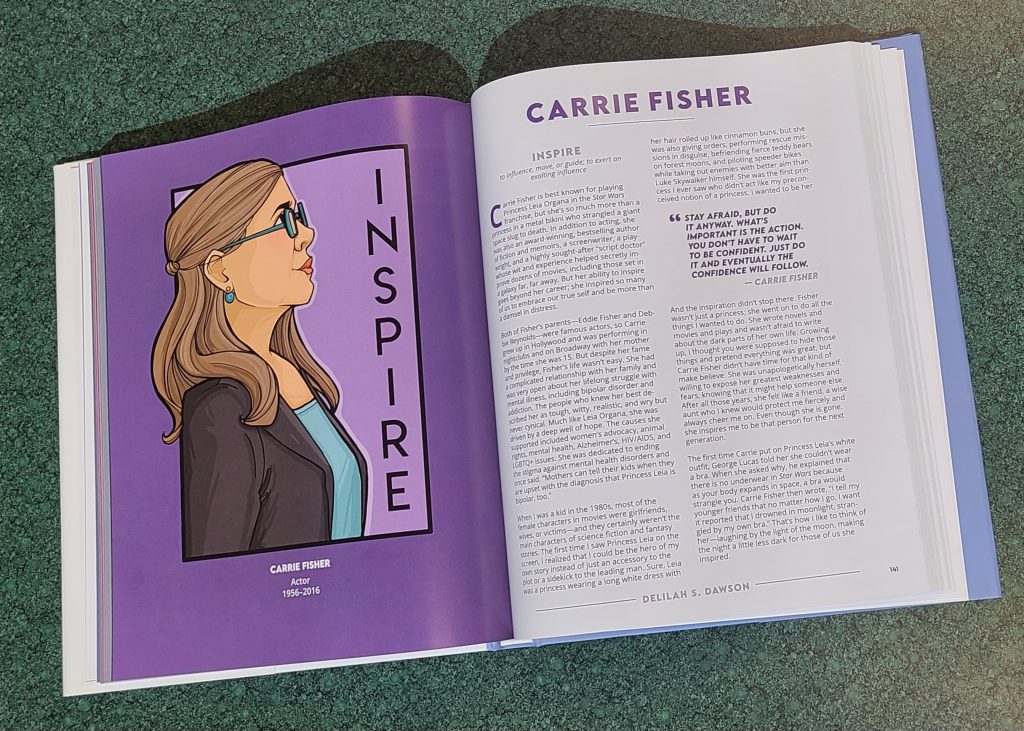
Friday Reads: Dead Things Are Closer Than They Appear by Robin Wasley
With Halloween later this month, it seems appropriate to choose a story of magic, mayhem, and monsters for Friday Reads.
Living in a town on the fault lines of the magic sealed into the ground … this was every-day to Sid (she’s 17). Occasionally wisps of something floated up from the ground – this was what the tourists were hoping to see.
But then, one of the several Guardians of the sealed area is killed, his key taken, and is used to open one of the several fault lines. Out comes threads of magic that attach themselves to people and animals. Also, zombies and other monsters are now on the loose.
The person behind this event – murder and destroying one seal, so far – keeps claiming magic should be for everyone – but he is absorbing all the magic he can find to keep for himself. He wants all the seals opened to absorb more magic.
Sid joins the remaining Guardians (her brother being one) and struggles to help make a difference in this situation. Who will survive? Who else will die?
As the December 1, 2023 issue of Kirkus says, “The thoughtfully developed characters grapple with issues of race, insecurities, self-absorption, isolation, connection, family, loss, grief, and empathy. …readers won’t want to put [it] down.” This book is written for older teens.
Wasley, Robin. Dead Things Are Closer Than They Appear. Simon & Schuster, 2024.
Friday Reads: Willful Creatures by Aimee Bender
You know those stories you (probably) read in your English 101 class? The ones that you still remember the experience of reading for the first time, decades later?
The Yellow Wallpaper; A Sound of Thunder; The Tell-Tale Heart; The Lottery?Willful Creatures by Aimee Bender is that experience, on repeat. The Los Angeles Times called the anthology, “Hemingway on an acid trip; her choices are twisted, both ethereal and surprisingly weighty … Terrifyingly lovely.”
“Twisted,” “ethereal,” and “weighty” are all superb descriptors for these stories. I do disagree with “Hemingway on an acid trip,” not because of the Hemingway comparison — which I find mostly apt; Bender uses long, winding sentences that don’t end up where one might expect — but because of the acid trip. That, to me, implies a lack of control, and Bender’s prose is anything but. It’s sharp and witty, well-crafted, well-paced, and intentional. Her stories operate on her own internal logic. Now, the reader may feel like they are on an acid trip: the zany, kaleidoscopic stories are both vivid and vague, like a particularly striking dream that leaves one discombobulated upon waking, but fades to half-remembered images and emotions ten minutes after.
I first read this book in my very first semester as a college freshman, over a decade ago. I was gobsmacked. Awestruck. I didn’t realize that people could write like that. I have not read the collection in its entirety since then, and so I was eager to find out what I thought now. There are only one or two stories that I find to be weaker — “Jinx” and “I Will Pick Out Your Ribs (from My Teeth)” — but the rest are solid, achieving a response that I only experience when reading a particularly fantastic poem.
My favorite stories from this collection are mostly in Part Three: “Dearth,” the tale of a woman who finds her cast-iron pot filled with potatoes, which return every day after she gets rid of them, and which slowly grow potato arms and legs and heads like children, increasing her desperation to rid herself of them (yes, she does eat one). “Job’s Jobs” is the story of God’s vendetta against a writer, and how the writer wins. “The Leading Man” is about a boy who is born with nine keys instead of fingers (his pinkie being the only exception), and who goes through his life seeking the matching locks. “Hymn,” the final story, is one of my all-time favorite short stories and is about a series of strange births. It ends with the lines: “my genes, my love, are rubber bands and rope; build yourself a structure you can live inside. Amen.” and it makes me cry every time. In fact, as I re-read this collection for the first time in years, I was struck by how many of the stories’ final lines were an emotional gut-punch. It’s like coming out from under hypnosis and then being informed that your dog was just hit by a car.
These stories must be approached with an open-mind. You cannot resist their strangeness, even when it disgusts you, otherwise you will miss something. There may be the instinct to retreat, to write the surreal tales off as nonsense (or an acid trip), but that, in my opinion, trivializes what Bender might be trying to do. I use the word “might,” because I still don’t understand some of them, even the ones that have stuck fast in my mind (“End of the Line,” the story about a very tiny man who is abducted and abused by a regular-sized man). But I think Bender is saying something about the inanity of life while simultaneously wrestling with — or arguing for? — the meaning of life. There’s an undercurrent of grief running through every story — I can see the shape of that, more clearly, now that I am older (wiser? sadder.).
If you like Willful Creatures, you will probably enjoy Bender’s full-length novel, The Particular Sadness of Lemon Cake. Somehow, Bender is able to maintain what she does in a 7-20 page short story through almost 300 pages. She has the range, darling.
Bender, Aimee. Willful Creatures: Stories. Anchor Books, 2005.
Friday Reads, The Book that Wouldn’t Burn, by Mark Lawrence
I’ll always pick up a book about a library or bookstore. The Book that Wouldn’t Burn, by Mark Lawrence, is just such a book. The library is a character in itself, mysterious, magical, dangerous, not just for the information in it, but for what lies in its chambers, and the knowledge of all the races it encompasses. Livira was born with a name but gained the name of a persistent weed of her arid homeland, because she’s just like it. She’s tenacious, stubborn, with a mind like both a sponge and a steel trap. Evar has only ever lived in one chamber of the library, like his found family of brothers and one sister. They were all put into a mechanism in the center of the library long ago, one each with a book, and came out long afterwards, with all the skills and even the mindset of the book and author. Except for Evar. He came out feeling as if someone was missing or had been taken from him.
We meet Livira at her home in the Dust, at age 8, when a canine race overruns the small settlement and takes the children captive. They are saved by a command of soldiers from a nearby city, and marched to the city, to be put to work there. Livira, as is her way, decides to take matters into her own hands, and ends up working in the Library. In a distant future, Evar is first found attempting to reach the ceiling of the chamber of the Library he & his siblings have never been able to leave, except through the Exchange, the mechanism that brought them together through time. He’s in his early 20s. So of course, we see more growth in the character of Livira, as she grows older, working in the library. There is more to Evar—he’s the only one of the siblings with a last name—Evantari.
Nowhere in the Library is safe—in either Livira’s time, or Evar’s. Mechanisms both helpful, neutral, and dangerous, wander the chambers that Livira’s time can access. In Evar’s time, his family is protected by two such mechanisms, against monsters called Escapes.
At the beginning if feels like a fantasy, or an end of empire or failing colony story. The further into the book I read, the more interesting the themes became. I hadn’t been acquainted with the author, but after reading reviews, discovered he was going to do something different (paraphrase from Grimdark Magazine, review by John Mauro), and even in the blended fantasy science fiction genre, it is different. It does speak to many timeless themes—should knowledge be free to the masses, should advanced technology be accessible to less advanced societies. Even the state of refugees in times of crisis. It hints at mechanisms that span time and place, machines far above the current society’s technical level. Even sayings like “we’re not in Kansas anymore” appear, even though they have no idea what or where Kansas is or was. The Library, sometimes called the Athenaeum, has always been there. It has rooms that only open to the species that it has books from. So far, three species are known. My suspicion is that none is native to the planet, which is never named.
I enjoyed The Book that Wouldn’t Burn so much that I read the next title in the trilogy, The Book that Broke the World, and am waiting for The Book that Held Her Heart, out in April 2025.
The Book That Wouldn’t Burn, by Mark Lawrence, book 1 in The Library Trilogy, Ace (Penguin Random House), 2023, hardback, 9780593437919, 559 pages,
The Book That Broke the World, by Mark Lawrence, book 2 in The Library Trilogy, Ace (Penguin Random House), 2024, hardback
Friday Reads: Thinking in Systems by Donella Meadows
Last night I went to a Community Building workshop on affordable housing here in Lincoln. To be clear, I personally have affordable, well-maintained housing. My landlord is cool. He fixes stuff. But apparently that’s not so true in the Near South Neighborhood. Probably other neighborhoods too.
I heard about code violations, landlord retaliation, rising housing costs, and mold aplenty. So very much mold. Everyone in that room knew about the problem, but was looking for a solution. That’s where Thinking in Systems by Donella Meadows comes into play.
That was the first comprehensive book I read about systems thinking. In a nutshell it says what we all know to be true: one things affects another, which affects another in a big, messy cycle. In this case, housing structures are designed and built decades ago. Funding is raised for building and construction, but all houses need repair eventually. The landlords who own the units do not always have funding for costly repairs, like extensive mold damage or updated plumbing. Some just plain don’t seem to care. I could go on. It’s just turtles all the way down.
Thinking in Systems talks about how to bring some order to the chaos. I read this book many moons ago, but it was one of the things that inspired me to make this Affordable Housing Map that shows what it takes to tackle the problem statewide. View it on a desktop. Maybe a tablet. It’s too big to see on a smartphone.
The map is one way to visualize a system, but that gets paired with root cause analysis to dig deep and make sure efforts are addressing the right problem. Finding new and different ways to bring people together to share ideas, innovate and collaborate are good tools too , among others.
All in all, it turns out I like to think in systems. Who knew? I’m a systems nerd! Give this book a read if you want to find out what it takes to solve the big, messy problems of the world.
Friday Reads: Small Acts of Courage: A Legacy of Endurance and the Fight for Democracy, by Ali Velshi
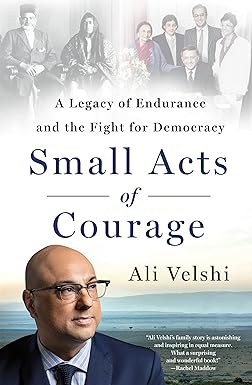
Many readers will recognize Ali Velshi, author of Small Acts of Courage, as a journalist who’s worked for CNN, Al Jazeera America, and MSNBC. Small Acts of Courage is not a typical celebrity memoir, however. Instead, it is a family story dating back to the late 19th century. It starts in Gujarat, India, with Velshi’s great-great-grandfather, and follows subsequent generations as they relocate to South Africa, Kenya, Canada, and finally, in Velshi’s case, the United States.
One thing I appreciated about this book was the historical perspective it provided. It answered questions about the Indian diaspora, especially as it exists in South Africa and Canada, and also connected some dots about the impact of the British Empire and colonialism on migration. The biggest takeaway, however, relates to the lessons Velshi learned from his family about the importance of civic engagement and pluralism in a healthy democracy.
Having grown up in South Africa under apartheid, Velshi’s parents knew the destructive power of racial segregation, as well as the impotence of having no political voice. So when they moved to Canada in the early 1970s, at a time the country was not only actively welcoming immigrants but had also adopted an official policy of multiculturalism, they were all in. They became politically active, served on boards and committees, and dedicated themselves to building and participating in a civil society. Velshi’s father even ran for political office in 1981, not because he had a chance to win, but because at that time virtually no immigrants did so; he felt someone needed to show the immigrant community they could: “There was a point to be made, that you could run for office here without landing in jail or being shot by somebody, and it had to be done if for no other reason than to prove that it could be done” (188-189).
Although Velshi writes about earlier generations of his family rubbing shoulders with Gandhi in South Africa—Velshi’s great-grandfather was Gandhi’s contemporary and friend and his grandfather was Gandhi’s youngest student at Tolstoy Farm ashram–this book isn’t about the impact big-name historical influencers have on society. It barely even touches on Velshi’s life as a jet-setting journalist. Instead, it’s a celebration of and an argument for the contributions of everyday people who serve society by serving others. People like his sister, a civil servant in Toronto who performs “the grueling, thankless grunt work of citizenship” (237). And his parents, whose Canadian citizenship “was something they created, something they built themselves out of the raw materials and opportunities [they had] access to” (266.) I’d say the main takeaway from Velshi’s book is that citizenship is “a muscle that atrophies if you don’t use it . . . “ (266). If this is a message that resonates with you, be sure to check out Small Acts of Courage.
Velshi, Ali. Small Acts of Courage: A Legacy of Endurance and the Fight for Democracy. St. Martin’s Press, 2024.
Friday Reads : Flight Patterns, by Karen White
I recently picked up Flight Patterns, by Karen White, at a library book sale. And while the author was new to me, what really drew my attention was not just the description of the story, but of the story’s location: Apalachicola, Florida. Apalach, as it’s known to it’s residents, is a town not far from where I grew up and that offers some of the most beautiful homes, gorgeous beaches, and best seafood in the entire South. Flight Patterns tells the story of a woman coming home to the Apalach family she left behind – and to the woman she always wanted to be. In the telling of this woman’s story, Ms. White has done such a magnificent job of describing the beauty of the town, area and people, that it brought back many fond memories of summer days there with my family. As per my usual habit, I both read and listened to this title, and was riveted from beginning to end, as I’m sure you will be too!
Georgia Chambers has spent her life sifting through other people’s pasts while trying to forget her own. But then her work as an expert on fine china – especially Limoges and the mystery surrounding a particular pattern – requires her to return to the one place she swore she’d never revisit: her home town.
It’s been 13 years since Georgia left her family home on the coast of Florida, and nothing much has changed except that there are fewer oysters and more tourists. She finds solace in seeing her grandfather still toiling away with his bees in the apiary where she spent much of her childhood, but encountering her estranged mother and sister leaves her rattled. Seeing them after all this time makes Georgia realize that something has been missing – and unless she finds a way to heal these rifts, she will forever be living vicariously through other people’s remnants. To embrace her own life – mistakes and all – she will have to find the courage to confront the ghosts of her past and the secrets she was forced to keep. **Synopsis courtesy of Audible
Friday Reads: The Bear and the Nightingale by Katherine Arden
With the last few days of heat warnings, a story about endless winter nights and frost-demons seemed like a good choice.
Told much like a fairy tale, the story centers on Vasilisa, who lives with her father, nurse, and siblings in a small village at the edge of a great frozen wilderness. The village exists somewhere between the influences of the “modern” religion and the “old” faith which honors the spirits of the house and surrounding forest, who have always offered protection. Most nights are spent around the hearth listening to stories, especially the one about the evil frost-demon lurking in the woods.
Vasilisa has always been a strong, rebellious child with dreams of adventure and no desire to marry or settle down. When her father decides it’s finally time to remarry (and hopefully find a positive role model), he brings home her new stepmother, Anna, from the city.
Fiercely devout and fighting against a terrifying curse, Anna forbids all practices related to the old spirits. A young priest follows shortly after, determined to prove himself by “saving” the village and returning to the city as a hero. As evil creatures grow closer and the village suffers, Vasilisa becomes a target due to her own strange gifts.
Defying those she loves most, she has to find the true cause and battle against the darkness to save them all.
The Winternight Trilogy:
- 1. The Bear and the Nightingale
- 2. The Girl in the Tower
- 3. The Winter of the Witch
Arden, Katherine. (2017). The Bear and the Nightingale. Del Rey.
Friday Reads – The Mona Lisa Vanishes by Nicholas Day
Did you ever wonder why the Mona Lisa is so famous? Surely it’s because Leonardo Da Vinci was such a talented artist. Or perhaps the actual Mona Lisa was so beautiful and beloved that artists clamored to paint her portrait? Or… perhaps the painting gained its stature as one of the most recognizable pieces of art worldwide because of a little incident that took place 113 years ago this week, on August 21, 1911. A mysterious man in a white smock hid inside a closet at the Lourve until the museum was closed, and when the coast was clear, he took the Mona Lisa off its wall, removed its frame, and walked out the door.
And thus begins Nicholas Day’s “The Mona Lisa Vanishes: a Legendary Painter, a Shocking Heist, and the Birth of a Global Celebrity.” Curious to find out more? I certainly was!
Day weaves a compelling tale of how lax security at the Lourve and a bungled police investigation led to an international fascination with a small painting most of the world had never seen. Intertwined with the intrigue of the art heist is the rather absurd life story of Da Vinci himself and how he came to paint the Mona Lisa – one of the few endeavors he seems to have carried out to completion. Brilliant but easily distracted, Leonardo Da Vinci was famous for his flakiness as much as his talent.
Aimed at middle-grade readers, this fast-paced work of narrative nonfiction should hold the attention of mystery-lovers of all ages. Fans of the “A Series of Unfortunate Events” books by Lemony Snicket may recognize the illustrations of Brett Helquist throughout.
Day, Nicholas. (2023). The Mona Lisa Vanishes. Random House Studio.
Posted in Books & Reading, General
Tagged art history, art theft, books, Da Vinci, Friday Reads, middle grade, Mona Lisa, narrative nonfiction, Reading, True Crime
Leave a comment
Friday Reads: “And Then There Were None” by Agatha Christie
I’ve always been fascinated by puzzles. Murder mysteries are a unique kind of puzzle, guiding you through an entire scenario through specific points of view to only show you exactly what the author wants you to know. The smallest of details can be crucial information, and information that seemed critical could turn out to be an outright lie. It makes your head spin, and when you finally learn the truth all of the little puzzle pieces click together in your brain in the most satisfying way. Despite my love for a good mystery, I have never read an Agatha Christie book- until now. And what better place to start than with the World’s Favorite Christie, And Then There Were None?
“The whole thing is utterly impossible and utterly fascinating. It is the most baffling mystery Agatha Christie has ever written.” – New York Times
The majority of the book takes place on Soldier Island, an isolated small island off of the Devon coast. Ten strangers are invited by U.N. Owen to stay at their manor, all for various reasons. Once all the guests have arrived and see that their gracious host is nowhere to be seen, the mystery begins. A phonograph is played and a voice fills the room, charging each and every guest with murder and declaring them prisoners. By the end of the night the first death happens in front of them all, and they must face the fact that somebody has summoned them here in order to kill them.
The book jumps between the perspectives of different guests, giving us insight into how they are handling the events and who each of them may suspect is the murderer. After all, it could very well be one of them. Not to mention the ominous poem in each of their rooms, counting down the deaths of ten soldiers in a rather ominous nursery rhyme with gruesome deaths that just so happen to match up with the increasing number of deaths on the island.
It’s a dizzying story that had me turning pages both forward and back, re-reading passages to try and discover the mystery for myself. Writing an engaging mystery with twists and turns, while keeping it plausible is quite the task, and Christie herself described crafting the mystery as “so difficult to do.” The epilogue wraps everything up in a neat little bow that I’m still thinking about days after finishing the book.
Agatha Christie is responsible for many of the mystery clichés and tropes that we know and love today. It seems her title of “The Queen of Mystery” is well earned, and I look forward to digging further into her sizable collection of mystery novels.
Christie, Agatha. And Then There Were None. William Morrow Paperbacks. 2011
Posted in Books & Reading, General
Tagged Agatha Christie, And Then There Were None, Friday Reads
Leave a comment
Friday Reads: Wandering Stars by Tommy Orange
Tommy Orange’s latest book, Wandering Stars, is both a prequel and a sequel to his Pulitzer Prize finalist, There There. Wandering Stars was recently longlisted for the Booker Prize, and seeing that news reminded me I needed to check this book out. If you read There There, you know that Orange adapts narrative structures with more success than a reader might expect. Wandering Stars takes this distinctive world-building further—it’s more of a world rebuilding after a world destruction. It’s heartbreaking and breathtaking at the same time.
Orange is an enrolled member of the Cheyenne and Arapaho tribes of Oklahoma. He lives in Oakland, California, and the Bay Area is often featured in his writing. I’m going to quote the publisher for a quick synopsis that I can’t improve upon: “Wandering Stars is a novel about epigenetic and generational trauma that traces the legacies of the Sand Creek Massacre of 1864 and the Carlisle Indian Industrial School through three generations of a family.”
You don’t need to know the violent colonial history, already, to understand the story. Orange fills in enough detail for the most unacquainted reader to understand the context, and still relates the history in a poetically short (yet relevantly detailed) way. He does this so effectively that a reader, who might be previously familiar with facts about boarding schools and massacres, will somehow get a freshly horrible perspective on the history, and what it means for the characters’ lives and relationships.
I enjoy how Orange creates his characters on the page, and how they exist within context of each other. Even when a character can’t face sharing their pain with others, or face sharing the pain (or happiness, or acceptance) of others, they find they can’t escape this demanding, rewarding intersection of other identities. People are important to other people, and it’s a dynamic, fluctuating, frustrating, and wonderful thing.
I remember telling someone that I had listened to the audiobook of There There, and that person wondered how well the audiobook could work, considering the multiple narrator technique Orange used in the book. It had worked very well, I assured them—my only disappointment with the CD-format audiobook was that the last disc only had a couple of tracks on it, total–so that when I put the last disc into my car stereo, I only had a few moments of story left, when I expecting a whole disc’s worth of tracks. I appreciate finally having more of the story—from before, from after, from the stars on down.
Orange, T. (2024). Wandering stars (First edition). Alfred A. Knopf.
Friday Reads: “Brooklyn” and “Long Island” by Colm Toibin
Brooklyn and Long Island by Colm Toibin (CULL-um Toe-BEAN)
(#1 and #2 in the Eilis Lacey Series)
I was glad to read two of this Irish author’s books for the sense of place–Enniscorthy, Ireland, Brooklyn, and Long Island, New York. Hearing an Irish accent from narrator/actor Jessie Buckley while I listened to Long Island was also a treat. A steady stream of gossip, and caring too much about what others think, were present in both books. Not surprisingly, both steer the plot heavily. Windows are not just for checking the weather.
Brooklyn follows Eilis (A-lish), the main character of both books, during the early years of her adult life. Her older sister and the local priest arrange for Eilis to immigrate to Brooklyn for a job and it never occurred her to disagree with their plans. The arrangements include living in a boarding home and working at a department store while taking night classes to become a bookkeeper. As she copes with homesickness and begins to acclimate to American culture, she meets and secretly marries an Italian man named Tony. Slowly, and with more confidence, she becomes someone who asserts herself and her own choices. The transformation is slow and satisfying.
Long Island begins with a 40-year-old Eilis and her two teenage children living in a cul-de-sac with her entire Italian family as her neighbors. A knock on the door from an Irish man she does not know, reveals that Tony will soon be the father of his wife’s child. Upon the birth, the baby will be deposited on Eilis’ doorstep for her to raise, no longer his problem. Eilis returns to Ireland for her mother’s 80th birthday and because her marriage is unraveling. Jim, a romantic interest from her past, is still on her mind and she arrives to Enniscorthy to find out that he has never married. All of the unspoken thoughts and feelings of Jim and Eilis make for several pages of angst and clandestine meetings that are never truly secret.
Eilis’ character is fascinating to me but the dialog and interior thoughts of unexpressed feelings and unanswered questions were sometimes plodding. I would encourage watching the movie Brooklyn for its clever and crisp dialog by Nick Hornby and wonder if the same filmmakers will want to adapt a less cheerful Long Island into a movie. If you are looking for a trip to rural Ireland, this could be your ticket but you may need a strong Irish whiskey to accompany your visit.
Tobin, Colm. Brooklyn. Scribner. 2009.
Tobin, Colm. Long Island. Scribner. 2024.
